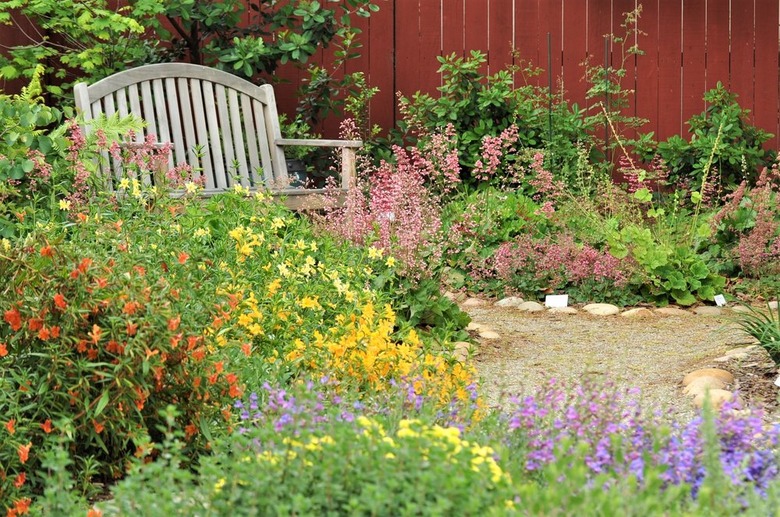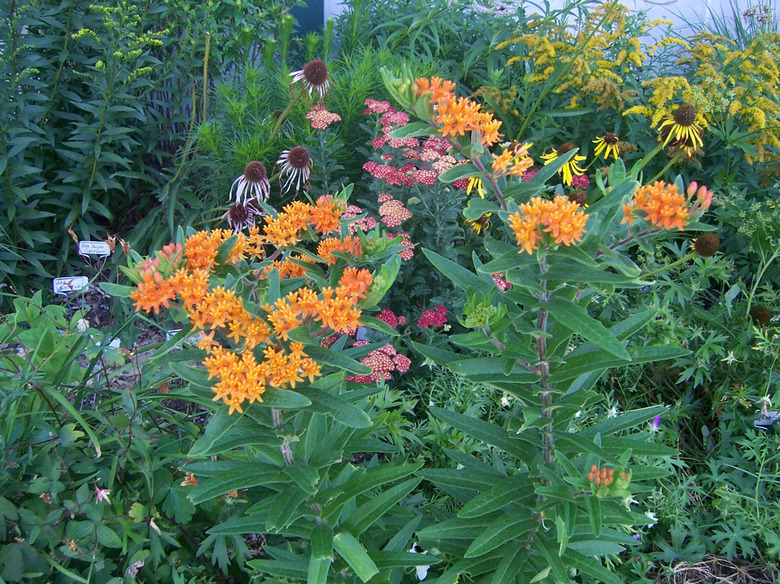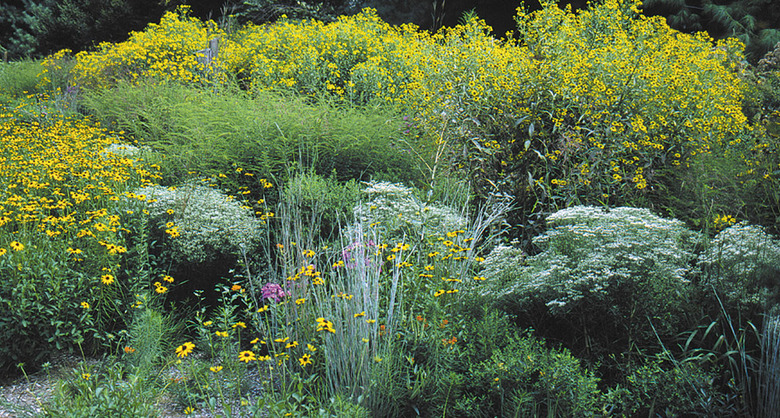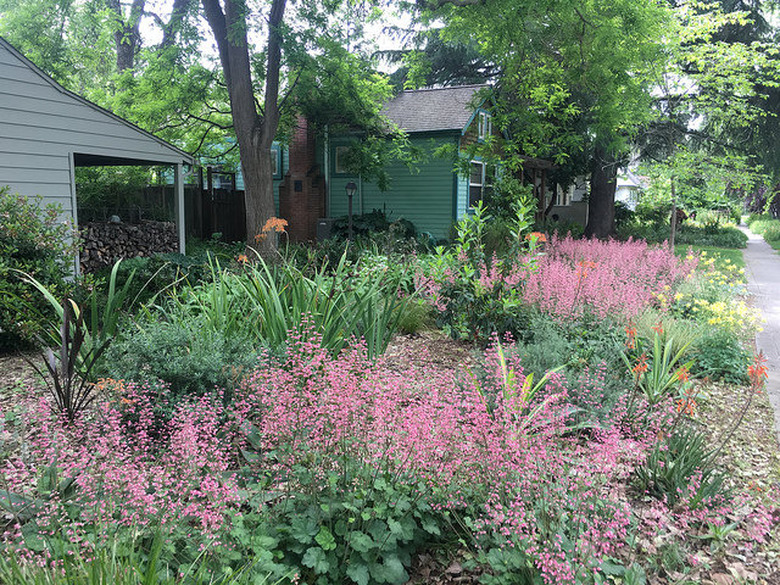Tips For Designing A Native Garden
The term "native garden" is now familiar to many people, but is very often misunderstood to mean any space in which "volunteer" plant species are allowed to flower and set seed. There are at least two good reasons why a weedy vacant lot is not a native garden. In the first place, every region has its share of non-native plants that have gone feral. These non-natives, which were at one time introduced intentionally for some desirable trait or unintentionally with soil or seeds or even ship's ballast, are often more persistent or invasive than the native varieties, have no established niche, and are out of equilibrium with the local ecosystem.
Distinguishing the Plants from the Weeds
Distinguishing the Plants from the Weeds
The other reason a weed patch is not a native garden is that "garden" implies a certain curatorial selection of plant species and a level of mindful management. One of the benefits of a true native garden is that native plant varieties are naturally suited to your local or regional climate and soil conditions. They have evolved to thrive with little artificial input. This means that, once established, a native garden doesn't require the same fertilizer, water, pesticides and herbicides that many non-native plantings demand. That's better for the environment and for the animals, birds and insects that live there.
But that's not to say that you can simply plant a native garden and then ignore it. Without regular tending,, your native garden will soon resemble that neglected vacant lot. What differentiates a weed from a native plant? In truth, very little. A weed is a volunteer plant growing where you don't want it, regardless whether that plant is non-native or native. In a genuine native garden, the plants have been selected for their particular qualities and arranged to best realize those qualities.
Choosing the Plants for Your Native Garden
Choosing the Plants for Your Native Garden
How do you know which native plants will work best in your region and soil conditions? If you are considering establishing a native garden, it's a good idea to seek out and visit a local arboretum or botanical garden that has native plantings, ideally one that labels them for easy identification. Take a notebook and jot down the names of plants you like and observations about how they are used relative to other plantings. Notice what is planted in full sun and what thrives in shade, what likes the high ground and what needs the marsh. Native gardens change over the course of a season, so plan on visiting periodically. You can also visit nature parks or wild areas in your vicinity to gain a better understanding of your local flora. Native plant guides, such as the regionally specific ones from the National Audubon Society, can help you identify the native plants you find in the wild.
Buy your plants locally if you can. Plant nurseries increasingly offer native plants as part of their inventory. Purchasing from them will encourage local nurseries to offer more. Check online to find the best resources in your area. Of course, seeds are available from numerous online sources.
Every Garden Has Its Limits
Every Garden Has Its Limits
Unlike a natural meadow or prairie, your native garden should have well-defined boundaries. A common criticism of native patches is that they look messy and, while that may be an arbitrary and subjective evaluation, containing your garden within a distinct border or edge can help. Giving your garden a distinct shape can also make it easier to map a garden plan on paper. Of course in keeping with the natural, loosely managed spirit of a native garden, the shape should be organic and irregular, without straight edges.
Start Your Native Garden From Scratch, or Ease Into It?
Start Your Native Garden From Scratch, or Ease Into It?
If you are superimposing your native garden on an already existing garden space, you have the choice whether to clear the space and begin anew, or to start small and to let your native garden evolve. Both alternatives have advantages. If you opt to start from scratch, you can completely remove problem invasive weeds and plants and add any necessary preliminary soil amendments. You need not compromise your plan to accommodate existing plants. Your garden will be wholly native right from the start, but it may be a few years before it's completely established and integrated.
If you choose to evolve your garden into a native one, you can avoid the awkward phase where everything is becoming established at the same time, but your ability to completely prepare the space for native plantings will be more limited. To plan your transition to native plants, begin with a comprehensive inventory of what is already there. Some of it may already be native. Note the findings of your inventory on your garden plan. Then, at whatever pace is comfortable to you, systematically replace the non-native plants with native ones.
Native Gardens Provide an Oasis
Native Gardens Provide an Oasis
When you choose to cultivate a native garden, you are not only fostering the indigenous plant life, you are also entering into the web of natural connections that support the birds, animals and insects native to your area. The ideal of a native garden is to achieve a natural, uncontrived yet harmonious effect. In actual practice, your garden is likely to include some compromises between haphazard wildness and the principles of effective garden design.
Tip
Here are some tips to help you balance those compromises.
- Grasses are a staple of native planting and their root systems form a tight matrix that discourages weed growth. But grasses can look messy, so use them as a backdrop for larger-leafed and more colorful plants.
- Use curved or meandering paths throughout to keep beds at a manageable size.
- When you choose which natives to plant, in addition to the traditional garden design considerations, take into account whether they are favorable or essential to birds and pollinators.
- Natural meadows don't require a focal point but a central point of interest can enhance your garden design. In keeping with the natural ambiance, consider a twig-built arbor or other structure constructed or woven from natural materials.
- Cluster or mass plants rather than distributing them as individuals. Repeated use of one or two varieties will add continuity to your planting.
- Even if you live in a developed and urban area, a native garden can provide welcome visual relief from the regimentation and an oasis for wildlife.
- Because a native garden can appear unkempt and lacking intention to some sensibilities, a sign identifying it as native plantings and perhaps even tags identifying individual plant species can be persuasive.




